Nikon AF-S DX Nikkor 35mm f1.8G Review
-
Ease
of Use -
Sample
Images -
Lens
Specs -
Rating &
Conclusion -
Main
Rivals -
Review
Roundup - Comment
-
More…

Introduction
Back in the heyday of 35mm film photography, a 'kit lens' or standard lens usually meant a 50mm prime featuring a maximum aperture of f1.7...f2 - most typically, f1.8. 50mm lenses were popular with manufacturers because they were easy to get right in the optical department and cost little to manufacture. They were also popular with photographers because they were both sharp and inexpensive at the same time, and their angle of view was reasonably close to that of a theoretical 'normal lens' for the 135 format (a 'real' normal lens would have had the same focal length as the diagonal of a full frame on 35mm film, i.e. 43mm, but such lenses were rarely made, especially for interchangeable-lens system cameras).
With the growing popularity of zooms, the term 'kit lens' came to mean a typically 35-70mm or 28-80mm f/3.5-5.6 standard zoom rather than a 50mm 'nifty-fifty'; and this continued into the digital age as well, except that the focal length range was adjusted to take into account the generally smaller sensors of most DSLRs. While that appeared to make sense, demand for a fast, compact and optically sound 'standard prime' grew steadily among the increasing number of DSLR owners. Nikon heard the cries of these photographers, and in the run-up to PMA 2009, announced the AF-S DX Nikkor 35mm f1.8G lens, for use on their DX cameras.
Ease of Use
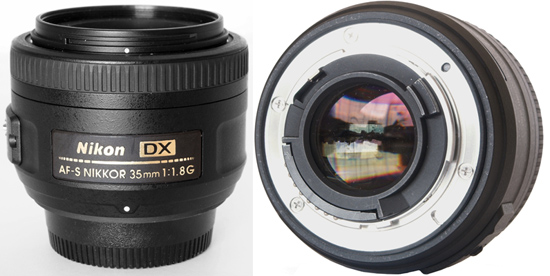
The Nikon 35mm f1.8G is indeed a very compact and lightweight lens, measuring only 70x52.5mm and weighing in at just 200 grams. Part of the reason why it is so light is that the outer barrel is made of plastic (and feels so), but at least the lens mount is metal. The Nikon 35mm f1.8G will mount on any Nikon SLR, but - as noted in the Introduction - it is meant to be used on digital SLRs with a DX sized sensor only. Use of this lens on a film body would result in huge amounts of vignetting with completely black corners. Attaching it to a DSLR with an FX sized sensor will cause the camera to switch to DX mode and shoot at reduced resolution by default. With 'Auto DX crop' disabled and 'FX format' selected, the Nikon D3, D3x and D700 will show the same kind of vignetting as the film bodies.
Mounted on a DX format DSLR and focused at infinity, the lens has a diagonal angle-of-view of 44 degrees, which is slightly less than the approximately 46-47 degrees of a 50mm lens on an FX body.
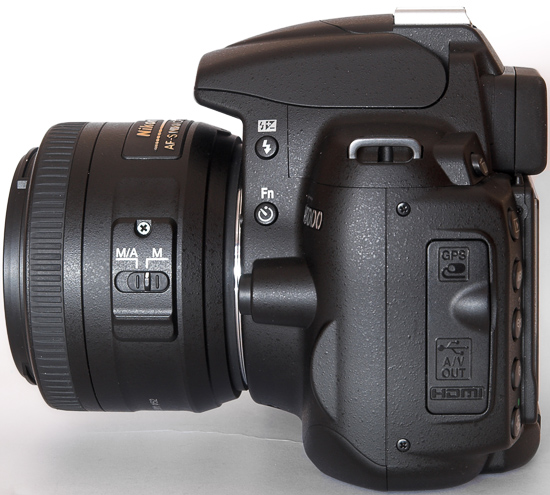 The Nikon 35mm f1.8G DX lens attached to a Nikon D5000 digital SLR
The Nikon 35mm f1.8G DX lens attached to a Nikon D5000 digital SLR
The Nikon 35mm f1.8G offers little in the way of features. Being a G lens means it has no aperture ring - though that is not a real problem, since all of Nikon's Digital SLRs allow the photographer to set the desired aperture on the camera, which then communicates this information to the lens. A more important omission is that of a distance scale, along with any depth-of-field markings. This is a bit of a sad news for street photographers, who will not be able to use zone focusing techniques as easily as with a lens featuring a proper distance scale complete with DOF signs. The lens also lacks the Vibration Reduction feature that is increasingly common on Nikon's lenses - though to be fair, none of their short primes has VR. The only outside control you can see on the lens barrel - putting aside the mechanically coupled focus ring - is the focus mode switch that you can see below..
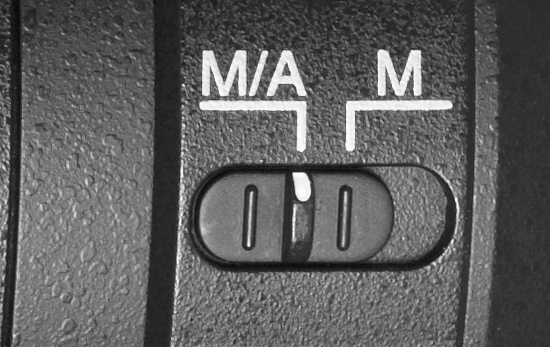
In most markets, the HB-46 hood is included as a standard accessory with this lens, but it was not provided to us for this test.
Auto-focus
The Nikon 35mm f1.8G features a Silent Wave Motor (SWM) that allows near-silent auto-focusing on all Nikon DSLRs, including those that lack an in-body focus motor (D40, D40x, D60 and D5000). Importantly, this solution allows instant manual override even when the focus mode switch is in the M/A position.
In use, we found the focusing to be indeed very-very quiet, and generally fast too, with the lens mounted to a Nikon D5000 body. Live View auto-focusing was a different story - the 35mm f1.8G is obviously not optimised for contrast-detect auto-focus, and focus times in Live view were not perceptibly better than with the 18-55mm VR lens that is often sold in a kit with the D5000.
Chromatic Aberrations
Lateral chromatic aberrations, often seen as purple or cyan fringes along contrasty edges, are easily noticed in photos taken in raw mode, but on the newer Nikon bodies, they are completely masked by in-camera processing if shooting JPEG. The crops below are from two different photos taken at f/8 and f/4, respectively, both of which were captured as NEFs and developed using ACR.
 |
 |
Longitudinal chromatic aberrations - LoCAs, or coloured fringes in the out-of-focus areas - can also be a problem sometimes, especially given that they cannot be corrected by in-camera processing. Thankfully, they do not show up too often. The following examples demonstrate what you can expect in the worst case (close focus, wide aperture, extreme contrast just behind the plane of focus). In most other cases, LoCAs are much-much less pronounced.
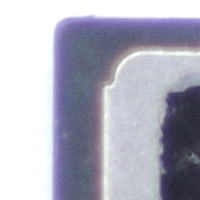 |
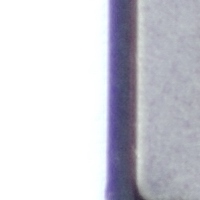 |
Light Fall-off
As noted earlier, using the lens on an FX or film body will result in lots of hard-edged vignetting with completely black corners, but given that it is not meant to cover these formats, this cannot be considered a criticism. On a DX body, there is no mechanical vignetting at all, and light fall-off is not field relevant.
Macro
The Nikon 35mm f1.8G is not a macro lens. The close-focus point is at 30cm from the sensor plane and maximum magnification is 0.16x. The smallest area that can be captured is approximately 135x90mm. The following example illustrates how close you can get to the subject, in this case a CompactFlash card.
 Close-up performance
Close-up performance
Bokeh Examples
Bokeh is a word used for the out-of-focus areas of a photograph, and is usually described in qualitative terms, such as smooth/creamy/harsh etc. If the camera-to-subject distance is short, the subject-to-background distance is great and the background is fairly homogeneous in terms of colour and tonal values, you can achieve very smooth bokeh with virtually any lens. There is not much point in testing bokeh in such ideal conditions. It is usually only when you have to make do with less cooperative backgrounds that lens design comes into play. These examples are from the out-of-focus areas of photos where the camera-to-subject distance was a couple of metres, and the backgrounds were varied. Since bokeh evaluation is subjective, these illustrations are provided with no comments, leaving it to you to draw your own conclusions from them.
 |
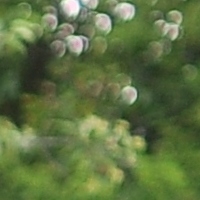 |
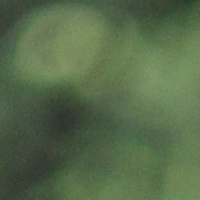 |
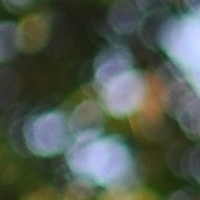 |
Sharpness
In order to show you how sharp this lens is, we are providing 100% crops on the following page.
-
Ease
of Use -
Sample
Images -
Lens
Specs -
Rating &
Conclusion -
Main
Rivals -
Review
Roundup - Comment
